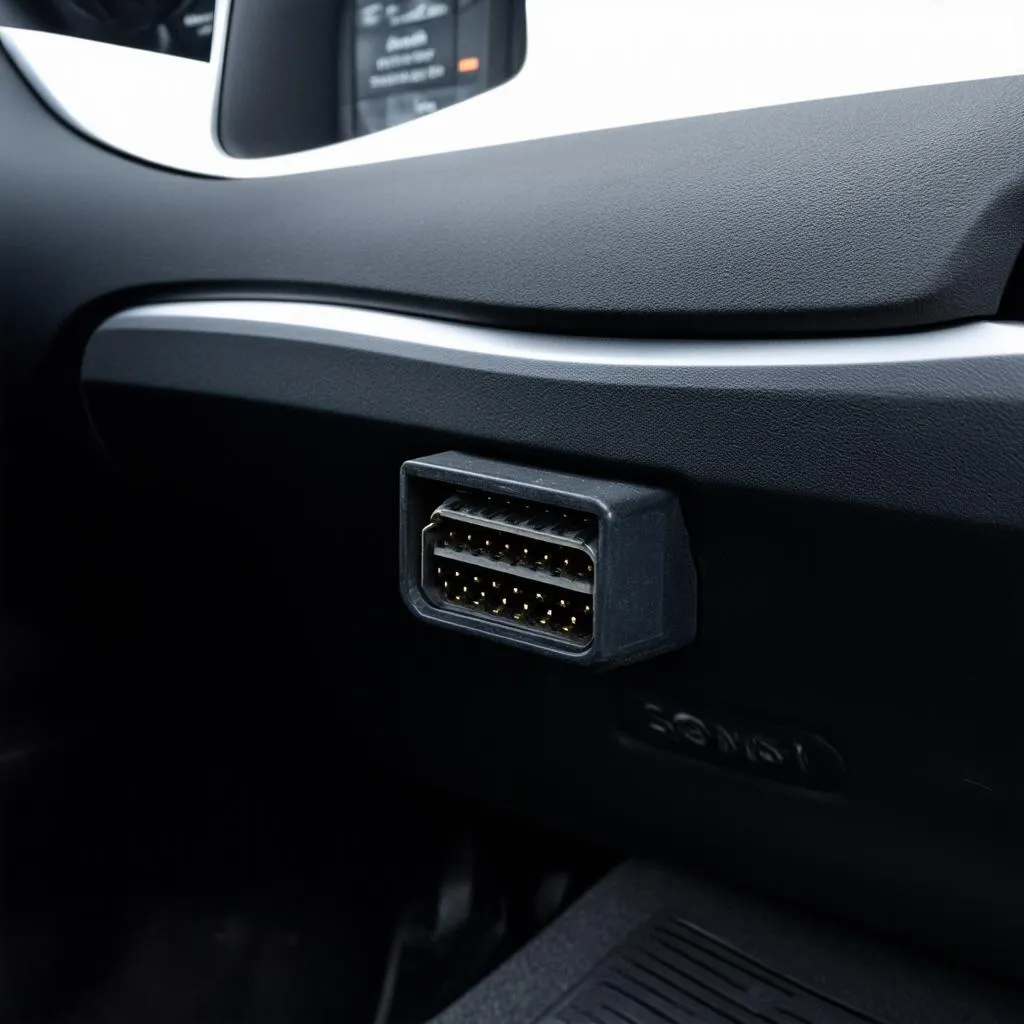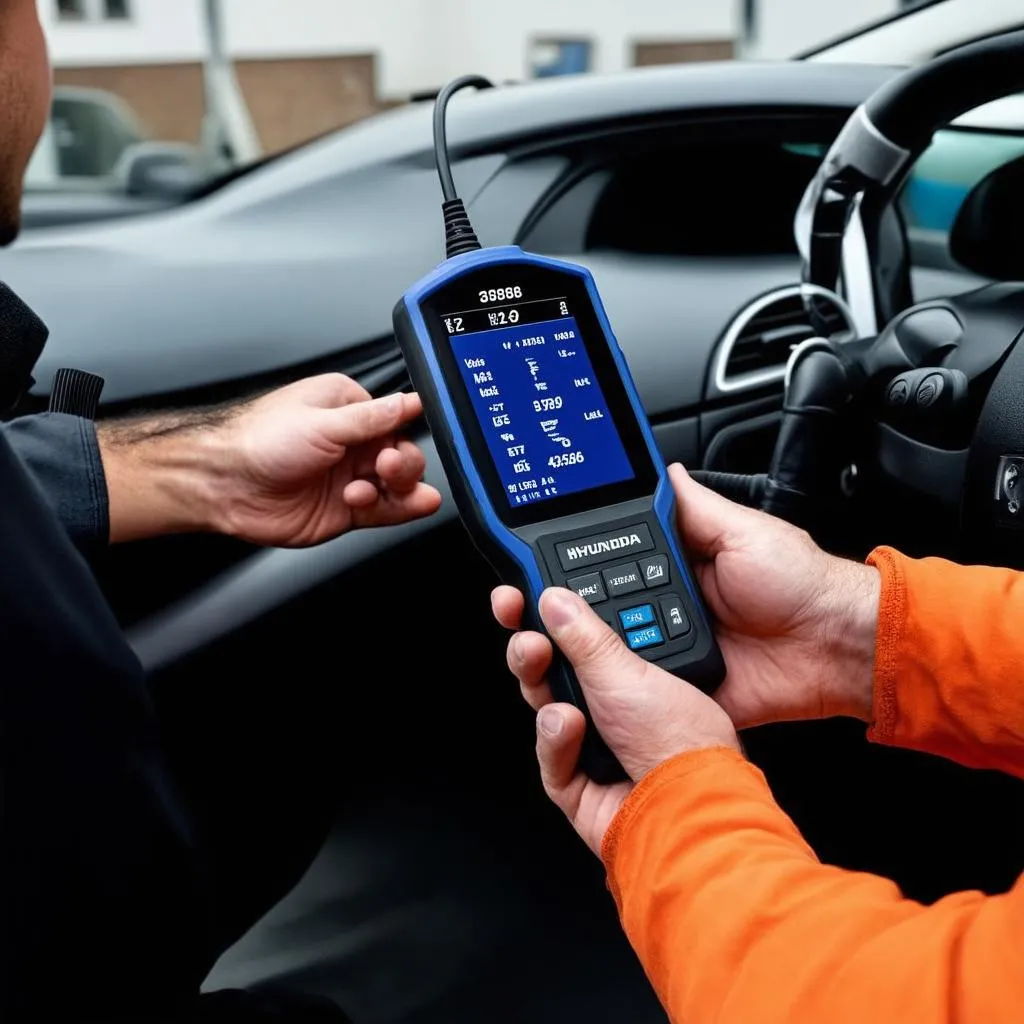Imagine this: you’re driving down the road, the sun is shining, and suddenly, a warning light pops up on your dashboard. You love your 2018 Hyundai Sonata, but like any complex machine, sometimes it needs a little TLC. But where do you even start? Knowing where to locate your OBD-II port is the first step in demystifying car care and taking control of your vehicle’s health.
The Significance of the OBD-II Port: More Than Just a Socket
The OBD-II port, often referred to as the car’s “black box,” is like your car’s personal communication hub. It holds a treasure trove of information about your car’s performance, from engine function to emissions data. Think of it as your car whispering its secrets to a mechanic, revealing any potential issues before they escalate into major problems.
Finding Your 2018 Sonata OBD Port: A Step-by-Step Guide
- Check Under the Dashboard: In most 2018 Hyundai Sonatas, the OBD-II port is located beneath the driver’s side dashboard, usually somewhere between the steering wheel and the driver’s side door.
- Look for a Trapezoidal Connector: The port itself is a 16-pin connector, shaped like a trapezoid. It’s typically black or white in color and may have a cover on it.
- Don’t Confuse it: Be careful not to confuse the OBD-II port with other connectors in the area. If you’re unsure, consult your owner’s manual for a diagram or reach out to a trusted mechanic.
 OBD Port Location
OBD Port Location
Unlocking the Power of Diagnostics: How the OBD Port Benefits You
-
Early Problem Detection: By connecting a diagnostic tool, often called a “scanner,” you can read the error codes stored in your car’s computer. This allows for early identification of potential issues, saving you time, money, and potential headaches down the road.
-
DIY Repairs and Maintenance: For the mechanically inclined, the OBD-II port empowers you to perform your own diagnostics and even some repairs. There are many affordable OBD-II scanners available for home use, allowing you to clear error codes, reset warning lights, and monitor your vehicle’s performance.
 OBD Scanner in Use
OBD Scanner in Use
FAQs: Your Burning Questions About the 2018 Sonata OBD Port, Answered
1. What can I do with an OBD scanner on my Sonata?
An OBD scanner lets you read and clear diagnostic trouble codes (DTCs), monitor engine performance, view live data streams, and even perform some advanced functions like resetting service reminders.
2. Can I use any OBD scanner with my 2018 Sonata?
While most standard OBD-II scanners will work, it’s recommended to use one specifically designed for Hyundai vehicles to access the full range of diagnostic features.
3. Where can I buy a reliable OBD scanner?
You can find OBD scanners online, at auto parts stores, or even some electronics retailers. Be sure to choose a reputable brand and check for compatibility with your Sonata.
4. Is it difficult to use an OBD scanner?
Many modern scanners are user-friendly, featuring intuitive interfaces and clear instructions. However, if you’re unsure about using one, it’s always best to consult a professional mechanic.
Exploring Further: Maintaining Your Hyundai Sonata
Looking for more tips and tricks to keep your Hyundai Sonata running smoothly? Check out these other helpful resources on techcarusa.com:
- Understanding Hyundai Sonata Warning Lights
- Essential Maintenance Tips for Hyundai Vehicles
- Finding a Reliable Hyundai Mechanic Near You
Need Expert Assistance? We’re Just a Message Away!
If you have any questions or need help diagnosing or fixing your Hyundai Sonata, don’t hesitate to contact us via WhatsApp at +84767531508. Our team of automotive experts is available 24/7 to provide you with the support you need.
Remember: Taking a proactive approach to car maintenance can save you time, money, and stress in the long run. Understanding your OBD-II port and utilizing its diagnostic power is a key step in becoming a more informed and empowered car owner.